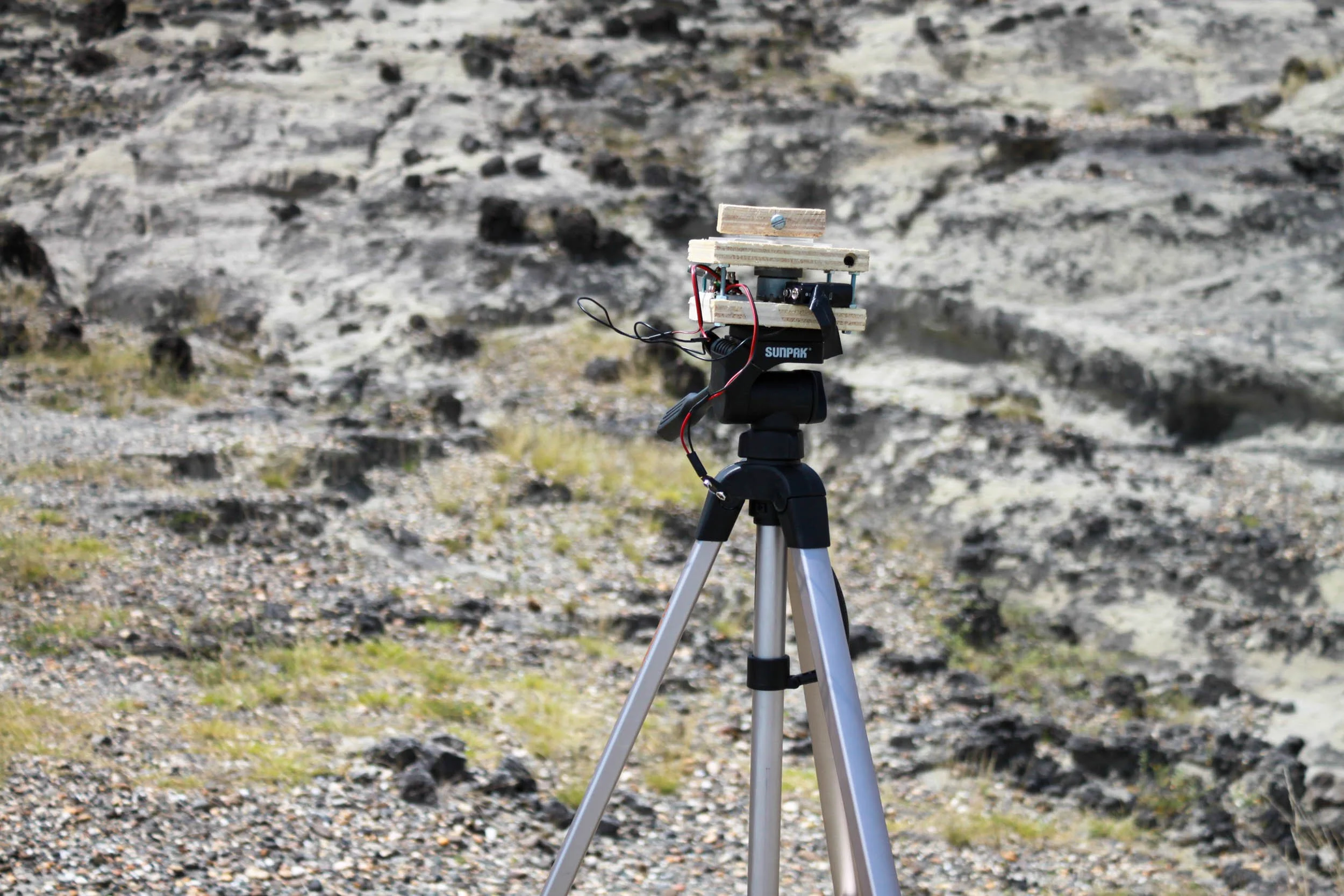¿Qué piensa de mí aquello que observo?
What does what I observe think of me?
2017
Video installation (Black and white; silent)
I think of Earth as a system of coexisting temporal stages, linking human and geological phases as constantly correlating instances that evolve together and accumulate through time. I view this relationship as a compound of malleable materials that add up to each other but never cease to mutate.
As if looking through a window, each human generation has only been able to experience a limited fraction of the world, determined by its particular ideas, beliefs, conditions, and circumstances. As I reflect on this, I consider how Earth is a vast complex of transformational processes, matter-energy flows, and massive forces which are sometimes impossible to dimension. In such cases, when we think about natural phenomena, we
find ourselves compelled to envision those events hypothetically. For instance, at this exact moment, how can we witness a grain of sand as the wind carries it in a desert, or how a single grain of sediment deposits on a riverbed? The only way to achieve that would be by recreating these scenarios in a laboratory under controlled conditions. However, even with a technical approximation, we would never manage to observe such occurrences in their natural environments.
With the latter in mind, I travel to the region of Huila in Southeast Colombia to record a desert, using a camera that slowly orbits 360 degrees on the same axis. How can I document the place in a way that captures its layers of time, rhythms, movements? Is that feasible?
Installation view. Galería 12:00 (Bogotá, Colombia)
Glass: 175 x 215 cm; Mirror: 110 x 85 cm x 5mm; Video: 00:04:10 min
This installation intends to give visitors a sense of seeing through the layers of an image decomposing in real-time and unfolding in space. First, I edit the video recorded in the desert, flipping it vertically, which generates a sense of strangeness in the viewer. The horizon they are used to seeing is now a perpendicular line dislocating their vision’s axis.
Subsequently, I project this image from the center of the exhibition room onto a mirrored glass plane, whose surface I have randomly scattered with a thin coating of dust. This delicate membrane traps part of the light, making the image visible. Furthermore, as days go by, the layer becomes denser as the dust in the environment naturally begins to accumulate.
After bouncing off the mirror, some of the light continues on its way towards a sizeable anti-reflective glass whose opaque texture ends up altering the projection in two ways. First, it prevents it from being seen in its entirety from any viewpoint, inviting visitors to walk around the structure, thus incorporating their bodies into the construction of the moving image. Second, once the video passes through this support, it becomes diffuse on the gallery’s back wall.
The glass acts as the window. When we look through it, it frames and therefore delimits our perspective but also separates us from what we see.
What does it mean to reflect on that which I can’t perceive?
How does the deconstructive process affect how the image observes me?
Does the image think something?
Am I just a particle looking at itself?
Circular time. Continuous panning.
Who is moving?
